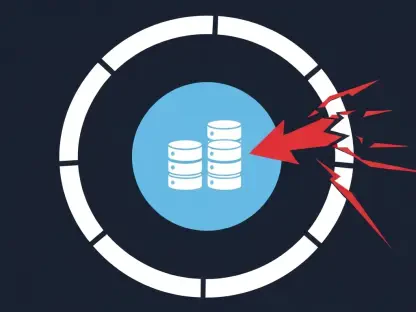Imagine millions of Galaxy users across the globe eagerly awaiting the latest software update, refreshing their devices for a notification that promises enhanced features and smoother performance, while Samsung’s One UI 8, built on the latest Android framework, sparks widespread anticipation. The company has rolled out its update schedule, starting with key markets like South Korea and Brazil. This roundup dives into diverse opinions, tips, and analyses from industry voices, tech communities, and user forums to unpack the phased deployment of One UI 8 across Galaxy devices. The purpose here is to consolidate varying perspectives on Samsung’s strategy, timelines, and the broader implications for users, offering a comprehensive look at what this update means for the Galaxy ecosystem.
Unpacking the Rollout Strategy: Diverse Opinions on Prioritization
Flagship First: Praise and Criticism for Early Access
Tech analysts across multiple platforms have noted Samsung’s decision to prioritize flagship devices like the Galaxy S25 and S24 series, along with foldables such as the Z Fold6 and Flip6, with updates rolling out as early as September 18 in Brazil. Many industry observers commend this approach, arguing that high-end device owners, often early adopters, deserve first access to cutting-edge features and security patches. This perspective highlights how focusing on premium models allows Samsung to refine the software before a wider release.
However, not all feedback is positive. User communities, especially those with older or mid-range devices, express frustration over being placed lower on the priority list. Some argue that this tiered system alienates a significant portion of Samsung’s customer base, particularly loyal users who may not upgrade annually. The debate centers on whether rewarding premium buyers with early updates outweighs the risk of dissatisfaction among other segments.
A balanced view emerges from tech blogs, suggesting that while flagship prioritization makes sense for testing and feedback, Samsung could improve communication about timelines for other devices. This middle ground emphasizes transparency as a way to manage expectations, ensuring users feel valued regardless of their device category.
Mid-Range and Legacy Devices: A Mixed Reception
Turning to mid-range Galaxy A series models like the A56 5G and older flagships such as the S23 series, opinions vary on Samsung’s late September and early October rollout plans. Forum discussions reveal a sense of relief among budget-conscious users that their devices are included in the update cycle relatively soon after flagships. This inclusion is often seen as evidence of Samsung’s commitment to a broad user base.
On the flip side, some tech reviewers caution that delayed updates for older hardware could expose users to security vulnerabilities, especially if critical patches are tied to One UI 8. They point out that while a phased approach ensures compatibility, it risks leaving legacy device owners unprotected for longer periods. This concern underscores a broader tension between innovation and support.
Insights from community threads suggest a practical workaround: users of mid-range or older devices should stay proactive by monitoring official channels for interim security updates. Such advice reflects a growing consensus that while Samsung’s timeline is logical, individual vigilance remains essential during the waiting period.
Tablets and Foldables: Underestimated or Justifiably Staggered?
The inclusion of tablets like the Galaxy Tab S10 and S9 series, as well as older foldables like the Z Fold5, in the October rollout has sparked varied reactions. Tech enthusiasts on social platforms argue that these devices, often central to productivity and niche use cases, deserve equal priority with smartphones. They contend that Samsung’s ecosystem increasingly relies on seamless integration across device types, making timely updates crucial.
Conversely, some industry analyses defend the later timeline, noting that tablets and foldables represent a smaller user base compared to phones, justifying a staggered approach. This perspective also highlights regional differences, with South Korea and Brazil showing slight variations in schedules, likely due to local testing and carrier dynamics. Such nuances fuel speculation about how global rollouts might adapt.
A recurring tip from user groups is for tablet and foldable owners to prepare their devices by clearing storage and backing up data ahead of the October wave. This practical advice, shared widely in forums, aims to minimize disruptions, reflecting a community-driven effort to navigate Samsung’s phased deployment with minimal friction.
Behind the Staggered Rollout: Analyzing the Logic and Impact
Stability vs. Speed: A Strategic Trade-Off
Delving into the rationale for Samsung’s tiered rollout, many tech commentators agree that starting with flagship devices allows for real-world testing to iron out bugs before reaching millions of users. This strategy, they argue, prioritizes stability over speed, ensuring a smoother experience for the majority. The approach is often praised as a responsible way to manage server load and feedback loops.
Yet, dissenting voices in online discussions point out that this method can frustrate users who perceive delays as unnecessary. Some suggest that Samsung could adopt a hybrid model, releasing updates in smaller, simultaneous batches across device categories to balance stability with accessibility. This critique reflects a desire for faster deployment without sacrificing quality.
A comparative lens from industry roundtables reveals that Samsung’s staggered updates align with norms set by other major manufacturers, though opinions differ on whether this truly enhances user satisfaction. The consensus leans toward cautious approval, with many noting that Samsung’s vast device portfolio necessitates a methodical rollout to avoid widespread issues.
Regional Variations: Challenges and Expectations
Focusing on regional timelines, particularly in South Korea and Brazil, feedback from user communities highlights both appreciation for detailed schedules and curiosity about global disparities. Many commend Samsung for providing concrete dates, such as September 25 for the S24 series in South Korea, seeing this as a step toward transparency. Such clarity helps users plan for updates effectively.
However, tech forums also reveal concerns about how regional testing and carrier partnerships might delay rollouts elsewhere. Some users speculate that markets outside South Korea and Brazil could face longer waits, creating uneven access to One UI 8’s benefits. This disparity prompts calls for Samsung to standardize timelines or at least offer clearer global projections.
Tips circulating among Galaxy fans include joining regional Samsung communities to stay updated on local rollout news. This advice, often shared by seasoned users, underscores a proactive approach to navigating potential delays, ensuring that individuals remain informed regardless of their location.
Key Takeaways and User Tips from the Community
Synthesizing insights from various sources, Samsung’s focus on flagship devices in the initial One UI 8 rollout phase stands out as a deliberate move to test and refine the update, with expansion to mid-range models and tablets by October. Tech blogs and user forums alike note that this prioritization, while logical, sparks mixed feelings about fairness and timing across the Galaxy user base. The structured timeline, especially in South Korea and Brazil, offers a clear roadmap but leaves questions about other regions unanswered.
Practical tips for Galaxy users emerge from community discussions, such as regularly checking device eligibility through Samsung’s official channels to confirm update availability. Another widely shared recommendation is to ensure devices are optimized by updating apps and freeing up storage space before installing One UI 8. These actionable steps aim to reduce hiccups during the transition.
Additionally, staying engaged with online Galaxy communities proves invaluable for troubleshooting and accessing real-time updates on regional schedules. Many users suggest bookmarking Samsung’s support pages or joining forums to share experiences and solutions, fostering a collaborative environment during this significant software deployment.
Reflecting on the Rollout Journey and Next Steps
Looking back, the discourse around Samsung’s One UI 8 rollout in key markets like South Korea and Brazil revealed a blend of anticipation, critique, and practical adaptation among users and analysts. The phased approach, starting with flagship devices and gradually encompassing mid-range models and tablets, sparked debates about equity but also showcased Samsung’s intent to balance stability with broad accessibility. Regional variations added layers of complexity, yet the detailed September and October timelines provided a foundation for understanding Samsung’s priorities.
Moving forward, Galaxy users can take proactive steps by monitoring official announcements for updates specific to their regions and preparing their devices to ensure a seamless experience. Exploring community-driven resources for tips and support also emerged as a vital strategy to address potential challenges. As the global rollout progresses, these actions help maintain momentum, while Samsung’s ongoing transparency remains key to sustaining user trust in an ever-evolving software landscape.









